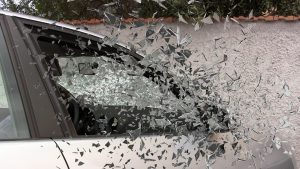
What is Social Security Disability?
To begin, let’s start off with the definition of disability from Social Security itself:
“You are entitled to receive Social Security disability (SSDI) or Supplemental Security Income (SSI) benefits when you are no longer able to perform a “substantial” amount of work as the result of a physical or mental impairment that is expected to last at least 12 months, or possibly result in death. To Social Security, a substantial amount of work, called “substantial gainful activity,” is making $1,220 or more per month, before taxes (or $2,040 per month for people who are blind, in 2019).”
Many conditions can meet the definition of disability if the condition is severe enough. This can include depression, anxiety, arthritis, asthma, heart failure, heart conditions, and other severe medical disorders. An applicant must have a very severe medical condition to win a disability approval based on the Social Security medical listings book (also called the Listing of Impairments). Generally, applicants will qualify if they can prove that their condition prevents them from performing work that will constitute substantial gainful activity (SGA).
The Definition of Social Security Disability
Social Security will look at an applicant’s job history over the past 15 years to assess whether or not you are capable of doing your job based on your medical and job history. Social Security will then assess whether you can perform other work that would qualify for substantial gainful activity. Individuals with severe mental impairments such as low IQ, anxiety, or depression will not be expected to perform work that require a large amount of concentration or focus, whereas a person with a severe physical condition would not be expected to regularly lift 50+ pounds.
How to Apply for Social Security Disability
Social Security’s evaluation process is naturally stringent, as thousands of people apply each day. When you apply for Social Security disability benefits, make sure to include a full list of your conditions, medications, symptoms, and impairments, as well as the names and numbers of your doctors, clinics, and hospitals that have been involved in your treatment. The more information  that you can give to prove your condition, the better. Make sure that your doctor and other medical professionals know that your condition is limiting your ability to work as well.
that you can give to prove your condition, the better. Make sure that your doctor and other medical professionals know that your condition is limiting your ability to work as well.
Requirements for Social Security Disability Benefits
To qualify for Social Security Disability benefits, you must have paid taxes related to Social Security for a specific length of time. The number of years required for Social Security payroll taxes varies by age, and if you stop working and paying taxes, you must be able to show that the disability or condition began before the insured status ran out.
Social Security Disability Attorney New York
At Argyopoulos and Associate LLC, we provide assistance to individuals who are disabled and in need to Social Security Disability benefits. We also help appeal disability denials, as well as assist clients during every step of the application process. Since we have helped hundreds of people with this process, we are confident that we can help you win your case. Our law firm serves SSD clients in many areas of New York, including Manhattan, Brooklyn, Queens, the Bronx, Staten Island, New York County, Kings County, Queens County, Bronx County, Richmond County, Nassau, Westchester, and other New York counties. If you need help securing your Social Security Disability benefits, call us at (800) ARGYLAW or visit our online contact page today.
IMPORTANT: If you have just been involved in an accident and/or injured – do not wait, protect your rights and contact us immediately by phone or email for immediate assistance.
If you are seeking legal counsel, representation or any additional information, then please enter your information in the contact menu and submit. Shortly thereafter, an attorney or associate of our firm will contact you, thank you.

Driving in the New York Winter
According to a recent article by CNN, “[this is] the fifth consecutive season that at least 30 inches of snow have fallen in New York City. The only other recorded time it snowed this much, for this long a period, was back in the 1880s (Enten)”. With increased rates of snowfall and ice on the roads, drivers living in New York City have to be very careful while they brave their morning commute.
If you’ve been living in New York City for the past few years, you may have experienced the largest snowstorm in the history of the city; in January 2016, New York City experienced a 27.5-inch snowstorm and the only subzero temperature since 1994. The National Weather Service is warning people to exercise extreme caution due to record levels of snowfall and inclement weather. Naturally, citizens need to take extra precautions during the winter months due to dangerous conditions on the road.
More Snow More Problems

Remember this: when the road is icy and/or wet, it takes a much longer time to come to a complete stop in a motor vehicle. By not leaving enough space in front of their car, a driver will not have enough time to break in the event of a sudden stop. This can lead to the driver losing control of the vehicle, which can result in a rear-end collision. These types of accidents can be mitigated if drivers leave enough extra space between their automobile and the automobile in front of them. It’s a simple equation that far too many people do not seem to follow: more space equates to more reaction time.
Winter Driving Tips
There are quite a few strategies you can use to lower your risk of a car accident in New York City during the winter months.
- Accelerate and decelerate slowly. If you accelerate or slam on the breaks too quickly on an icy patch, it can send your car spinning. Remember, inclement weather will increase brake time.
- Your margin of safety between cars should increase. If you are driving on the highway, allow yourself a breaking distance of 7-10 seconds from the car in front of you. When it is not icy out and visibility is ideal, the recommended time is 3-4 seconds.
- Keep your gas tank at least half full at all times. This will help avoid a gas line freeze.
- Regardless of the weather, always wear a seatbelt and encourage your passengers to do the same.
- That text or phone call can wait. According to the Department of Motor Vehicles, 9 people in the U.S. are killed each day as a result of crashes involving a distracted driver.
Automobile Accident Attorneys in New York City
Even if you follow every safety precaution recommended, there is always a chance that another driver could rear-end your vehicle. With record levels of snowfall and a record number of miles driven in the U.S. last year, the occurrence of automobile accidents is not on the decline. If you’ve been involved in an automobile accident in New York City, Argyopoulos & Associates is here to represent you. With over 27 years of legal practice, we have the experience needed to settle any legal conundrum. If you need representation, contact us today to speak with an attorney.

Are You Liable for Slip and Fall Injuries?
Slip and fall injuries are not just something to just laugh at. A fall that goes wrong may cause broken bones, internal bleeding, spinal injury or even brain damage! If someone slips and falls, just because they can get up afterwards isn’t a sign that they’re fine – for all we know the pain is hiding in cracked bones or a concussion. If someone slips and falls inside your home or place of business, does this make you automatically liable?
Maybe yes, maybe no. There is a Reasonable Expectation Not to Be Injured whenever a person enters someone else’s property with the owner’s permission. Incidents like slip and fall injuries or being hit by falling objects, being attacked by dogs or other pets, accidents involving amusement park rides, being injured inside a restaurant, etc., may fall under Premises Liability.
The Implied Promise of Premises Liability
Employers are held liable for the actions of their employees, parents for their children, pet owners for their pets, and property owners for the conditions of their property.
When someone is invited to a home or workplace, or appears there for a legal reason (like a courier delivering a package) there is an implied promise that the owner of the property has exerted a reasonable amount of care to assure the safety of their property for themselves and others. Property owners have the responsibility to minimize unsafe conditions. Inadequate lighting around stairs, unmarked slippery surfaces, ice and snow in the sidewalk, aggressive pets, and many other hazards could cause someone to slip and fall in surprise.
For example, if someone slips and falls on an unmarked wet floor, and your employees were negligent to inform about dangerous conditions (such as leaving a sign or cordoning off the area), you will likely be ordered to compensate them for their pain and medical bills. Unsecured equipment on rollers are another likely culprit. Malfunctioning air conditioning equipment and vents that drip water are classic examples of open-and-shut personal injury claims.
However, there are exceptions to slip and fall cases.
Limits on Premises Liability
- Restricted Areas Clearly marked restricted areas such as kitchens, industrial workplaces, or private workshops, generally will not make you liable for accidents suffered by visitors that should not be there. There is, instead, an expectation of danger for people who are not authorized personnel. Such areas should be clearly marked or you would still be held liable for the mistake.
- Trespassing People who enter your property without permission do not generally have the protection of the implied expectation not to get injured. However, if you have a serious property hazard and fail to leave a warning, you may still be held liable because the hazard would also be a danger to allowed visitors.
- Unforeseeability and Prevention
If you have already exercised all reasonable steps to secure your property and mark unsafe areas, you are not liable for freak accidents that could not have been anticipated. For example, at a party a guest spills a drink and someone slips, the fault falls on the person that caused said accident. But if they tripped and fell from a loose rug, you are the one at fault. If someone from outside throws something that lands inside your property and causes someone to lose their footing, you could not have predicted that.
- Self-Inflicted Injuries While people have an expectation not to get injured, they also should have a general awareness to protect themselves. They should not engage in activities that would prevent them from noticing the hazard – like texting or talking on their cellphone while walking, or ignoring adequate warning signs and safety measures. As noted in 1) and 2), they should also have lawful access or a legitimate reason to be in a dangerous or restricted area.
Proving Negligence and Liability with Slip and Fall Injuries
Only when it can be proven that the property owner or their representatives failed to act prudently to reduce potential hazards will a slip and fall claim will be granted in states that follow Contributory Negligence rules. Other states allow Comparative Negligence, in which the claimant’s damages are reduced by how much they contributed to causing their injuries.
Consult with your attorney as soon as possible to know if your actions could mark a form of slip and fall negligence that would impact the claim.
